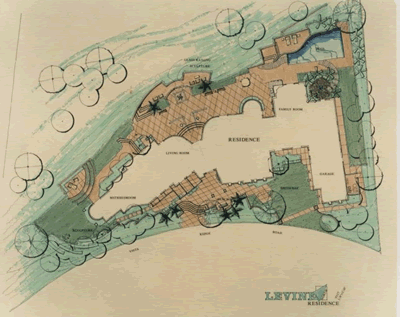|
Getting a Good Start – Worksheet
Understanding what you have to work with is an important part of the landscape design process. By completing this worksheet, you will have a good start on a landscape design. This worksheet will help you decide the placement of plants (such as shade or sun tolerant) as well as provide information on how to design a water and energy efficient landscape. You will see the best results by working with nature rather than designing something that works against it.
Site Mapping - checklist
A. What is the history of the property? The history can provide you with information on soil condition, what grows there naturally, and any hidden surprises (such as a pool that was filled in).
B. Draw a site map and include the following:

| q | Location of buildings and structures. |
| q | Location of spigots, downspouts, and external electrical outlets. |
| q | Location of overhead wires. |
| q | Location of fences, walls, and other permanent structures. |
| q | Existing landscape including trees on your property and your neighbors’. |
| q | Arrows indicating slopes. Include highpoints and low points. |
| q | North, south, east, and west. |
C. On your base map indicate the following natural energy patterns for your property:
1. Solar Aspects
| q | Indicate summer and winter sun angles. |
| q | Mark areas of long or short seasonal shadows. |
| q | Mark areas where shade is needed. Planting in arcs works better than straight lines when providing shade for a house or an outdoor seating area. |
2. Wind – air movement
| q | Indicate direction of the prevailing wind. Usually from the southwest in the greater Phoenix area. Can be a hot, drying wind in May and June. |
| q | Mark possible wind tunnels and swirls created by walls, structures, and other wind obstructions. |
| q | Mark frost pockets – low areas in the landscape. Do not plant frost tender plants in these areas. |
3. Traffic patterns
| q | People – Install pathways where people would naturally walk. |
| q | Wildlife – Do you need to make provisions for wildlife visits? Do you want to attract or deter wildlife? |
| q | Pets – What outdoor habits do your pets have? |
4. Slope and water harvesting opportunities
| q | Indicate direction of slope including pitch of roof. |
| q | Mark water flows from outside your property. |
| q | Mark areas where water accumulates or erodes on the property. |
5. Fire & lighting
| q | Identify tall structures, trees, and palms. |
| q | Identify high fuel areas including your neighbors’. |
| q | Identify power lines near trees. |
| q | Mark any areas in the prevailing winds, particularly upslope from wind. Remove fuel sources in these areas (i.e. wood piles, etc.) |
|
